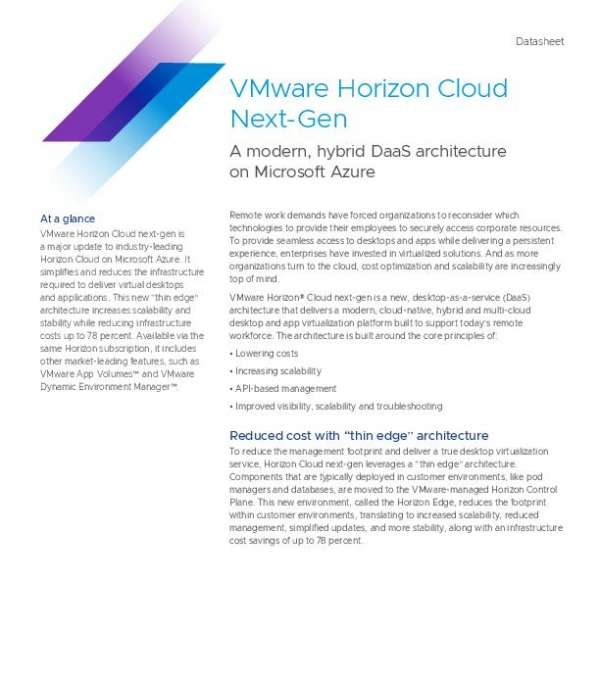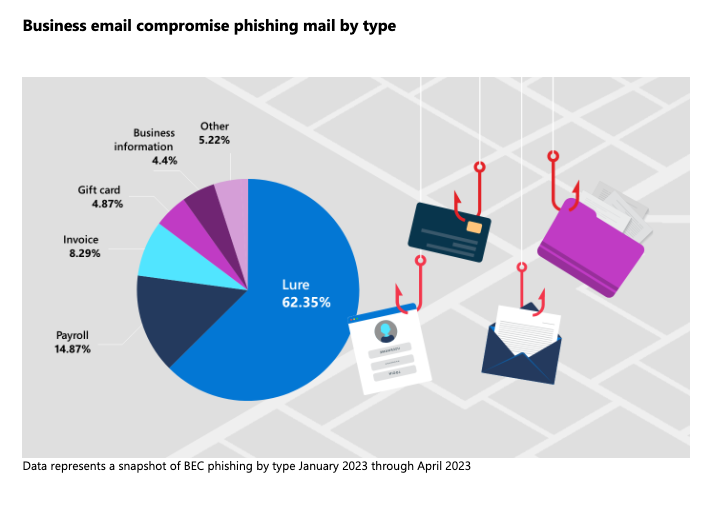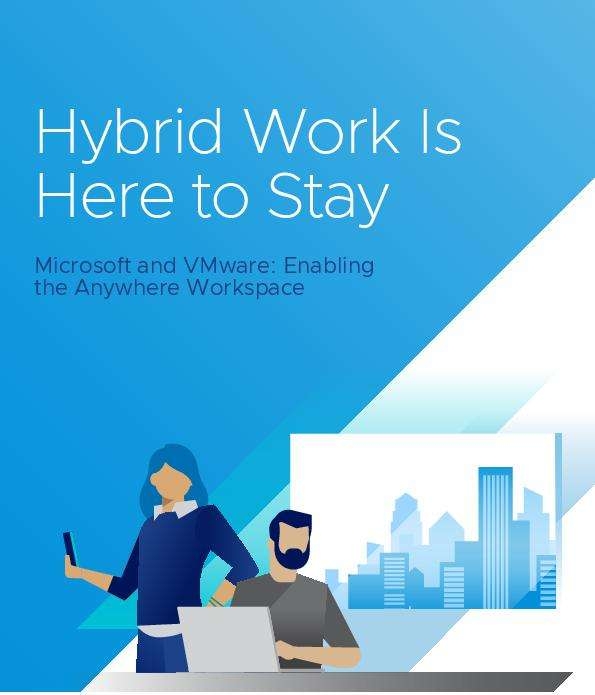Remote work is driving organizations like yours to seek new strategies and technologies for delivering secure access to company resources and data. Virtualization is one approach. As it gains traction as a means to deliver seamless access to desktops and apps with persistent user experience, cost optimization and scalability, cost optimization and scalability become increasingly important. VMware Horizon® Cloud next-gen is a desktop-as-a-service (DaaS) architecture that can support your remote workforce with a modern hybrid and multi-cloud desktop and app virtualization platform built on Microsoft Azure. This datasheet provides an overview of architecture building blocks and benefits. Download the datasheet for an at-a-glance of how it lowers costs, increases scalability, and improves visibility and troubleshooting.








